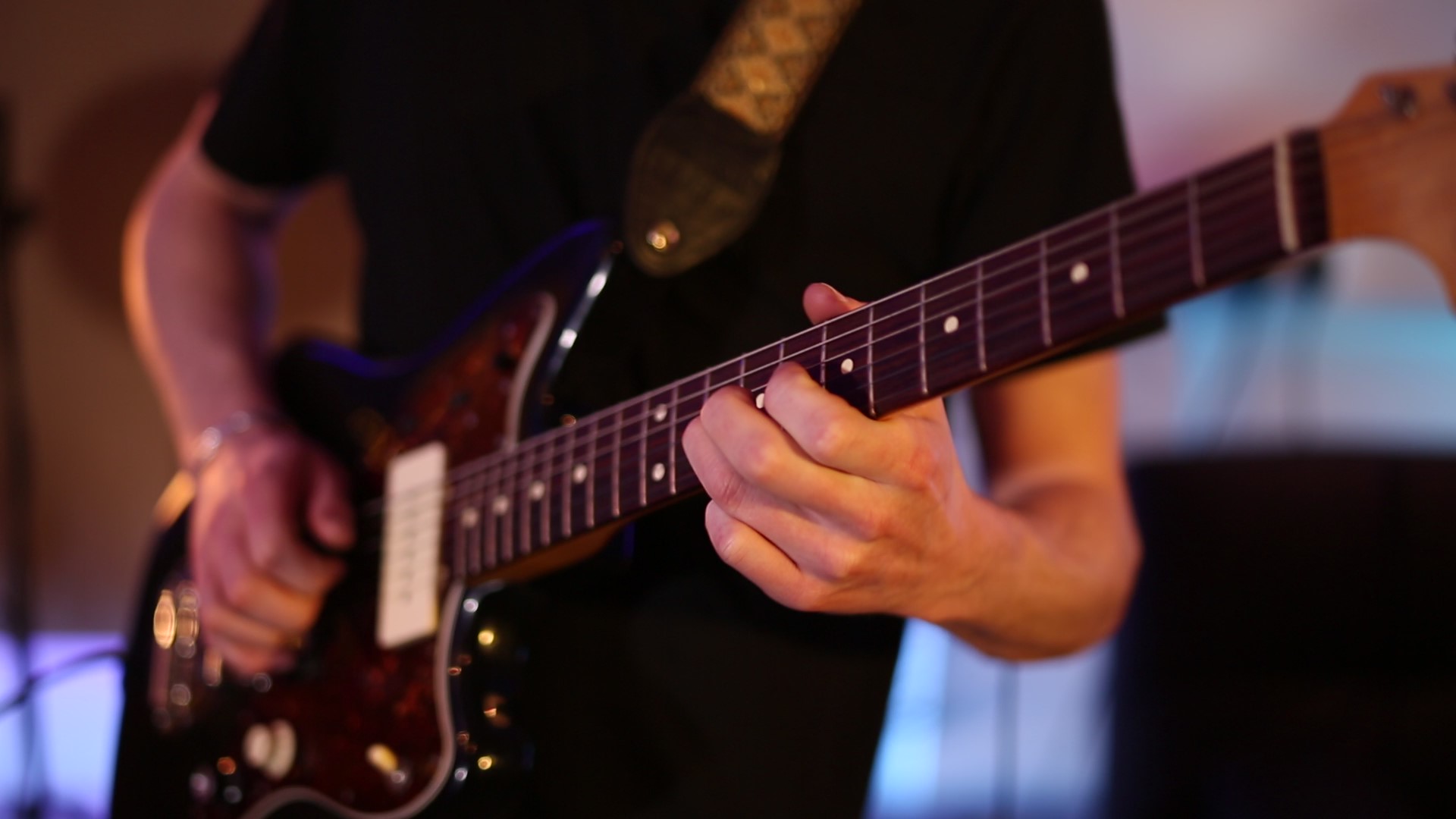Teach yourself the guitar – 10 top tips
Can you teach yourself the guitar? Yes! Follow our advice to learn to play guitar yourself.
2020 was a good year to be Fender. More people learnt guitar than ever.
If you were one of them, whether you’ve got an electric guitar or acoustic, it’s easy to get over-excited and have an ambitious vision of yourself becoming a solo-shredding axe genius overnight. Unfortunately, that’s going to take practise, and if you’re teaching yourself there’s no one to convince you to keep going but, well, you.
Thankfully there’s a treasure trove of great free hints and tips online, on sites like MusicRadar, with technique tips and resources. Before you get started check out these top 10 tips to teach yourself the basics on guitar.
Start with easy chords to learn on guitar
First get familiar with how guitar strings are ordered. Then start with the shapes of open chords and the technique needed to get a good sound when you strum. Don’t worry too much about the technique of strumming, just focus on moving smoothly from chord to chord.
Learning easy chords helps you to work on a good technique, which in turn stops you learning any bad habits that easily become engrained if you’re not disciplined at first.
Explore tabs and chord diagrams
When I was teaching myself, I started with open chords, learning from chord diagrams. You can also learn from guitar tablature. Both methods lay out the fretboard looking down from directly above with numbers for each finger, so you can match the diagrams to the shape of your hand on the guitar neck.
Once you’ve mastered the basic open chords you’ll find it easier to move onto more advanced chords.
Push on through the pain
Like any workout, the only way to build up strength is to keep going when things get tough. At first your fingertips are going to hurt and your hand might cramp from the new strange position you’re putting it in.
The only thing to do is keep practising, and your wrist and hand will strengthen as you go, I promise.
Get to grips with rhythm
Once you’re comfortable with a chord sequence, focus on the technique of your strumming hand. Pick a chord and stick to it whilst you get familiar with strumming techniques.
Keep your wrist straight so your hand is in line with it too, not at an angle over the strings. Push through the strings from your elbow. There are plenty of tips on using picks (plectrums) and rhythm techniques online.
Go S-L-O-W
Don’t rush when you’re practising. If you think you’re already playing deathly slowly – you’re probably not. Sorry. Slow down even more. That’s the best way to make sure you’ve got the riff or chord sequence nailed, and then you can start to speed up until you’ve got a smooth result.
Memorise some scales
Learning scales is vital for teaching yourself how to play solos or if you’d like to write melodies. You’ll be playing individual notes rather than fretting strings at the same time as you were with chords. The tip of your finger should be firmly in the middle of the fret.
If you master both chords and scales you can think about what kind of guitarist you want to be – rhythm or lead!
Learn your favourite songs
There’s nothing more satisfying than the first time you play a song from beginning to end. Pick a track from an artist you love and find a tab online or a YouTube tutorial, or even try and work out the song by ear. You can also learn from a thing from the olden times called a ‘songbook’, with chord diagrams over the lyrics.
Learning riffs from rock songs is a fun way to learn too – “Smells Like Teen Spirit,” “Iron Man” and other rock songs use power chords, which are simplified chords.
Don’t be afraid to sing along while you play. Be confident from the off and that will push you through any embarrassment. It’s another level of multitasking that will help your dexterity.
Practise. Lots.
Playing every day, with a focus on technique, is the best way to learn quickly. Sometimes it works out that if you’re stuck on a tricky chord sequence or riff, by putting the guitar down and picking it back up again the next day suddenly you’re able to crack it. So much of learning an instrument comes down to muscle memory, and practising regularly will get it naturally nailed.
Find a guitar pal
If you’re getting frustrated, try and find someone who’s taken up guitar as well and learn together. Jamming with other people is a great way to encourage and inspire everyone involved to push themselves to greater heights.
Take lessons
Everyone learns differently, and you might know that you need a bit of structure to progress. Online lessons from apps like Fender and Yousician are great, or check out our advice at learning from a real live human music teacher.
Whether you’ve already got a guitar lying around or you’re considering getting one, you’ll never get the chance to be the annoying person at a house party who whips out a guitar if you don’t know the basics and practise. Those lovely finger calluses and achy wrists will be worth it, though.
